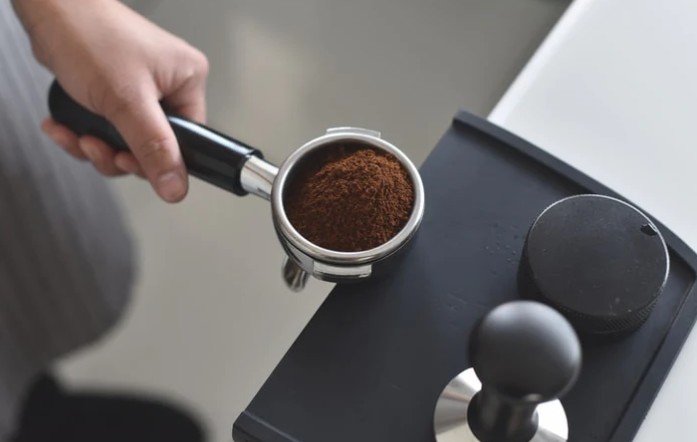If you’re aiming to brew the perfect espresso at home or just curious about what goes into that rich shot, understanding how many grams of coffee you need is key. The right amount of coffee grounds directly affects the flavor, strength, and overall quality of your espresso.
Knowing the standard measurement helps you dial in your grind size and extraction time for a balanced cup every time. Whether you’re a beginner or looking to refine your technique, getting this detail right makes all the difference in your espresso experience.
Understanding Espresso Coffee Measurements
Precise coffee measurement forms the foundation of consistent espresso brewing. Knowing standard quantities guides your process for flavor balance and extraction control.
What Defines a Standard Espresso Shot
A standard espresso shot uses 7 to 9 grams of finely ground coffee. This quantity produces a 25 to 30 ml beverage extracted in about 25 to 30 seconds. Single shots typically fall within this range, while double shots double the coffee weight to 14 to 18 grams and yield approximately 50 to 60 ml of espresso. These figures establish your baseline for adjusting grind size, tamp pressure, and shot timing.
Importance of Coffee Weight in Espresso
Coffee weight directly impacts the espresso’s strength, flavor complexity, and crema quality. Using less than 7 grams risks under-extraction, leading to weak, sour notes. Exceeding 9 grams often causes over-extraction, resulting in bitterness and harsh flavors. You maintain espresso consistency by leveling dose to shot ratio and fine-tuning brewing variables according to this weight. Accurate dosing supports repeatable results when you calibrate your grinder and espresso machine.
How Many Grams of Coffee Are Used in an Espresso
You use a precise amount of coffee grounds to achieve the ideal espresso shot. The quantity varies depending on shot size and brewing preferences.
Typical Weight Range for Single and Double Shots
The standard single espresso shot uses 7 to 9 grams of finely ground coffee. The shot volume typically reaches 25 to 30 ml, pulled within 25 to 30 seconds. For a double shot, 14 to 18 grams of coffee produce around 50 to 60 ml of espresso. Using these quantities ensures consistent extraction, balanced flavor, and proper crema formation.
| Shot Type | Coffee Amount (grams) | Espresso Volume (ml) | Extraction Time (seconds) |
|---|---|---|---|
| Single Shot | 7 – 9 | 25 – 30 | 25 – 30 |
| Double Shot | 14 – 18 | 50 – 60 | 25 – 30 |
Factors Affecting Coffee Dosage
Roast level influences dosing since darker roasts are less dense and require slightly less coffee to achieve the same extraction. Grind size impacts how much coffee you use; finer grinds pack more densely, sometimes needing minor dose adjustments. Your espresso machine’s basket size also limits the maximum coffee dose; be sure to match the dose to the basket capacity. Finally, taste preferences and desired espresso strength may require you to tweak coffee grams within the typical dosing range to find your ideal balance.
Impact of Coffee Grind and Dose on Espresso Quality
Grind size and coffee dose directly affect extraction, impacting flavor balance and crema quality in your espresso. Fine-tuning these variables helps you control strength, acidity, and bitterness.
How Grind Size Influences Coffee Measurement
Finer grinds increase surface area, slowing water flow and requiring slightly less coffee by weight to avoid over-extraction. Coarser grinds speed extraction, often needing a higher dose or adjustment in tamping pressure to maintain balanced flavor. Since grind size affects puck resistance, measuring your dose in grams ensures consistency when dialing in your shot. For example, using 7 grams of fine ground coffee might yield a different extraction than 7 grams of a coarser grind, making precise dosing critical.
Adjusting Dose for Taste and Strength
Increasing your coffee dose enhances body and intensity; reducing dose lightens the espresso’s strength and acidity. If your shot tastes weak or watery, raise the dose by 0.5 to 1 gram increments and adjust grind size accordingly. Conversely, lower the dose if your espresso is overly bitter or harsh. Standard single shots use 7 to 9 grams, while double shots range from 14 to 18 grams, but personal preference and machine specifications may push these boundaries. Tracking your adjustments and weighing each dose ensures repeatable results and a tailored espresso profile.
Tools to Measure Coffee for Espresso Accurately
Accurate measurement of coffee grounds ensures consistent espresso quality. Using the right tools helps maintain the standard dose and optimize flavor extraction.
Using a Coffee Scale
Use a digital coffee scale with a precision of at least 0.1 grams to measure your espresso dose. Place the portafilter on the scale before adding grounds and tare the weight to zero. Dose 7 to 9 grams for a single shot and 14 to 18 grams for a double shot. Consistent weighing prevents under- or over-dosing, which can cause sourness or bitterness. Scales with a built-in timer also assist in monitoring extraction time for repeatable results.
Other Methods and Best Practices
Avoid measuring coffee by volume, like tablespoons, because grind size affects density and weight. Use dosing funnels or calibrated baskets for better control when transferring coffee into the portafilter. Distribute grounds evenly in the basket before tamping to prevent channeling. Regularly calibrate your grinder and scale to ensure accuracy. Keep your measuring tools clean to avoid stale coffee residue affecting dose weight.
Conclusion
Getting your coffee dose right is key to pulling a great espresso shot every time. By focusing on precise measurements and adjusting based on your grind size and equipment, you can fine-tune your brew to match your taste preferences.
Using a reliable scale and paying attention to how much coffee you use will help you achieve consistent flavor, strength, and crema quality. Keep experimenting with your dose and grind until you find the perfect balance that makes your espresso truly yours.

